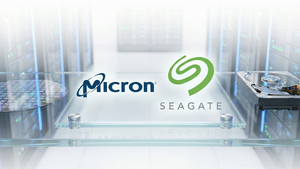Reply: Automation and Artificial Intelligence Are the Strategic Keys for an Effective Defense Against Growing Threats in the Digital World
Today, cybersecurity represents an essential priority in the implementation of new technologies, especially given the crucial role that they have come to play in our private and professional lives. Smart Homes, Connected Cars, Delivery Robots: this evolution will not stop and so, in tandem, it will be necessary to develop automated and AI-based solutions to combat the growing number of security threats. The risks from these attacks are attributable to several factors, such as increasingly complex and widespread digital networks and a growing sensitivity to data privacy issues. These are the themes that emerge from the new “Cybersecurity Automation” research conducted by Reply, thanks to the proprietary SONAR platform and the support of PAC (Teknowlogy Group) in measuring the markets and projecting their growth.
In particular, the research estimates the principal market trends in security system automation, based on analysis of studies of the sector combined with evidence from Reply’s own customers. The data compares two different clusters of countries: the “Europe-5” (Italy, Germany, France, the Netherlands, Belgium) and the “Big-5” (USA, UK, Brazil, China, India) in order to understand how new AI solutions are implemented in the constantly evolving landscape of cybersecurity.
As cyberattacks like hacking, phishing, ransomware and malware have become more frequent and sophisticated, resulting in trillions of euros in damages for businesses both in terms of profit and brand reputation, the adoption of hyperautomation techniques has demonstrated how artificial intelligence and machine learning represent possible solutions. Furthermore, these technologies will need to be applied at every stage of protection, from software to infrastructure, and from devices to cloud computing.
Of the 300 billion in investments that the global cybersecurity market will make in the next five years, a large part will be directed toward automating security measures in order to improve detection and response times to threats in four different segments: Application security, Endpoint security, Data security and protection, Internet of Things security.
Application Security. Developers who first introduced the concept of “security by design,” an adaptive approach to technology design security, are now focusing on an even closer collaboration with the operations and security teams, termed DevSecOps. This newer model emphasizes the integration of security measures throughout the entire application development lifecycle. Automating testing at every step is crucial for decreasing the number of vulnerabilities in an application, and many testing and analysis tools are further integrating AI to increase their accuracy or capabilities. Investments in application security automation in the Europe-5 market are expected to see enormous growth, around seven times the current value, reaching 669 million euros by 2026. A similar growth is forecast in the Big-5 market, with investments rising to 3.5 billion euros.
Endpoint security. Endpoints, such as desktops, laptops, smartphones and servers, are sensitive elements and therefore possible sources of entry for cyberattacks if not adequately protected. In recent years, the average number of endpoints within a company has significantly increased, so identifying and adopting efficient and comprehensive protection tools is essential for survival. Endpoint detection and response (EDR) and Extended detection and response (XDR) are both tools created to accelerate the response time to emerging security threats, delegating repetitive and monotonous tasks to software that can manage them more efficiently. Investments in these tools are expected to increase in both the Europe-5 and Big-5 markets over the next few years, reaching 757 million euros and 3.65 billion euros respectively. There are also a multitude of other tools and systems dedicated to incident management that can be integrated at the enterprise level. For example, in Security Orchestration Automation and Response (SOAR) solutions, AI can be introduced in key areas such as threat management or incident response.
Data security and protection. Data security threats, also called data breaches, can cause significant damage to a business, resulting in risky legal complications or devaluating brand reputation. Ensuring that data is well-preserved and well-stored is an increasingly important challenge. It is easy to imagine how many different security threats can come from poor data manipulation, cyberattacks, untrustworthy employees, or even just from inexperienced technology users. Artificial intelligence is a tool for simplifying these data security procedures, from discovery to classification to remediation. Security automation is expected to reduce the cost of a data breach by playing an important role in various phases of a cyberattack, such as in data loss prevention tools (DLP), encryption, and tokenization. In an effort to better protect system security and data privacy, companies in the Europe-5 cluster are expected to invest 915 million euros in data security automation by 2026. The Big-5 market will quadruple its value, reaching 4.4 billion euros in the same timeframe.
Internet of Things security. The interconnected nature of IoT allows for every device in a network to be a potential weak point, meaning even a single vulnerability could be enough to shut down an entire infrastructure. By 2026, it is estimated that there will be 80 billion IoT devices on earth. The impressive range of abilities offered by IoT devices for different industries, though enabling smart factories, smart logistics, or smart speakers, prevents the creation of a standardized solution for IoT cybersecurity. As IoT networks reach fields ranging from healthcare to automotive, the risks only multiply. Therefore, IoT security is one of the most difficult challenges: the boundary between IT and OT (Operational Technology) must be overcome in order for IoT to unleash its full business value. As such, it is estimated that the IoT security automation market will exceed the 1-billion-euro mark in the Europe-5 cluster by 2026. In the Big-5 market, investments will reach a whopping 4.6 billion euros.
Filippo Rizzante, Reply’s CTO, has stated: “The significant growth that we are witnessing in the cybersecurity sector is not driven by trend, but by necessity. Every day, cyberattacks hit public and private services, government and healthcare systems, causing enormous damage and costs; therefore, it is more urgent than ever to reconsider security strategies and reach new levels of maturity through automation, remembering that though artificial intelligence has increased the threat of the hacker, it is through taking advantage of AI’s opportunities that cyberattacks can be prevented and countered.”
The complete research is downloadable here. This new research is part of the Reply Market Research series, which includes the reports “From Cloud to Edge”, “Industrial IoT: a reality check” and “Hybrid Work.”
Reply
Reply [EXM, STAR: REY, ISIN: IT0005282865] is specialized in the design and implementation of solutions based on new communication channels and digital media. Reply is a network of highly focused companies supporting key European industrial groups operating in the telecom and media, industry and services, banking, insurance and public administration sectors in the definition and development of business models enabled for the new paradigms of AI, cloud computing, digital media and the Internet of Things. Reply services include: Consulting, System Integration and Digital Services. www.reply.com
View source version on businesswire.com: https://www.businesswire.com/news/home/20220530005087/en/
Contacts
Press contacts
Reply
Fabio Zappelli
f.zappelli@reply.com
Tel. +390117711594
Aaron Miani
a.miani@reply.com
Tel. +44 (0)20 7730 6000
More News
View More




Recent Quotes
View More
Quotes delayed at least 20 minutes.
By accessing this page, you agree to the Privacy Policy and Terms Of Service.